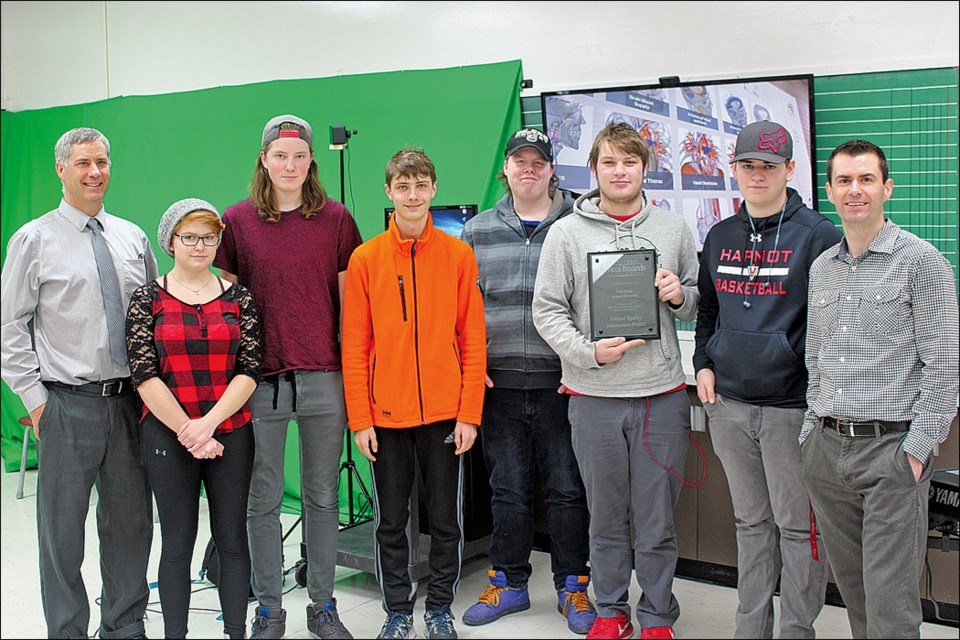It’s a one-of-a-kind program, built for students by students. Now, accolades are coming in for the virtual reality (VR) system at Hapnot Collegiate.
The group who helped create and program the system – which uses VR equipment including headsets, joysticks and specialized software to provide hands-on learning in different subjects – has been awarded the Premier Award for School Board Innovation from the Manitoba School Boards Association (MSBA). The award is given annually by the MSBA to one school that innovates and improves on student achievement and education.
Hapnot’s VR system, the first of its kind in a Manitoba school, was created last June by a group of Grade 10 students working with teacher Daniel Dillon.
“This is almost like winning an Oscar for a school division,” said Flin Flon School Division superintendent Constance McLeese. “These guys put this school on the map.”
Dillon had an idea to create a virtual reality arcade as a make-work project for some interested, handpicked students.
“I contacted [the students] in June and I said, ‘Hey, I have some money, let’s build a computer, we’re going to get VR. They were in here at the end of June, doing that stuff on vacation,” he said.
“The whole project piece of working together, developing an arcade and all that worked out and it landed into this kind of thing.”
Since it was fully built and installed, the system has proven to be a versatile tool, used by several classes and grade levels. The possibilities for the system are almost boundless.
“Where do we go from that? How do we go beyond that? I don’t know what the answer is,” said Dillon.
The students agree.
“When we first got it, I thought ‘Oh, we’re just going to use it for games or something like that.’ It turned out, it has a lot of applications for schoolwork as well. I thought that was pretty big,” said Ryan Nawrocki, one of the students who helped put the system together.
The system is able to run several programs, including simulators that show users a wide variety of subjects. Using the VR headset and joysticks, students can examine deep-sea aquatic life, constellations in the night sky, three-dimensional art, drawing and sculpting, the intricate details of human anatomy and images from streets around the world.
Through a series of different apps, the system can be applied to almost any subject taught at Hapnot.
“My French class actually came in when we were reading the Hunchback of Notre Dame. We came and used Google Earth and we looked at the cathedral,” said Gracie Baynton, part of the student group.
“I know there have been other classes who have used it, arts classes have come in and used it. We have a different paint program – you are in the world with your drawings, you can move it around. It’s actually really interactive and cool. The students really love that.”
Dillon and the students are currently figuring out how the system can be improved on. One suggestion is to put together a version of the system that could work with a laptop, allowing the VR program to be easily moved from place to place. This would not only allow the system to be used in different classrooms, but would allow students to set up pop-up clinics across town, including in public places and at events.
Dillon suggested bringing a new, more mobile system to nursing homes to help engage the elderly. Currently, the VR system is anchored to a tower in the school’s computer lab and is not easily mobile.
Another suggestion was to include a specialized VR treadmill system, which could allow the system to be used for physical education.
“It’s really interesting how interactive it can be. It’s a lot more than a lot of people think,” said Baynton.




